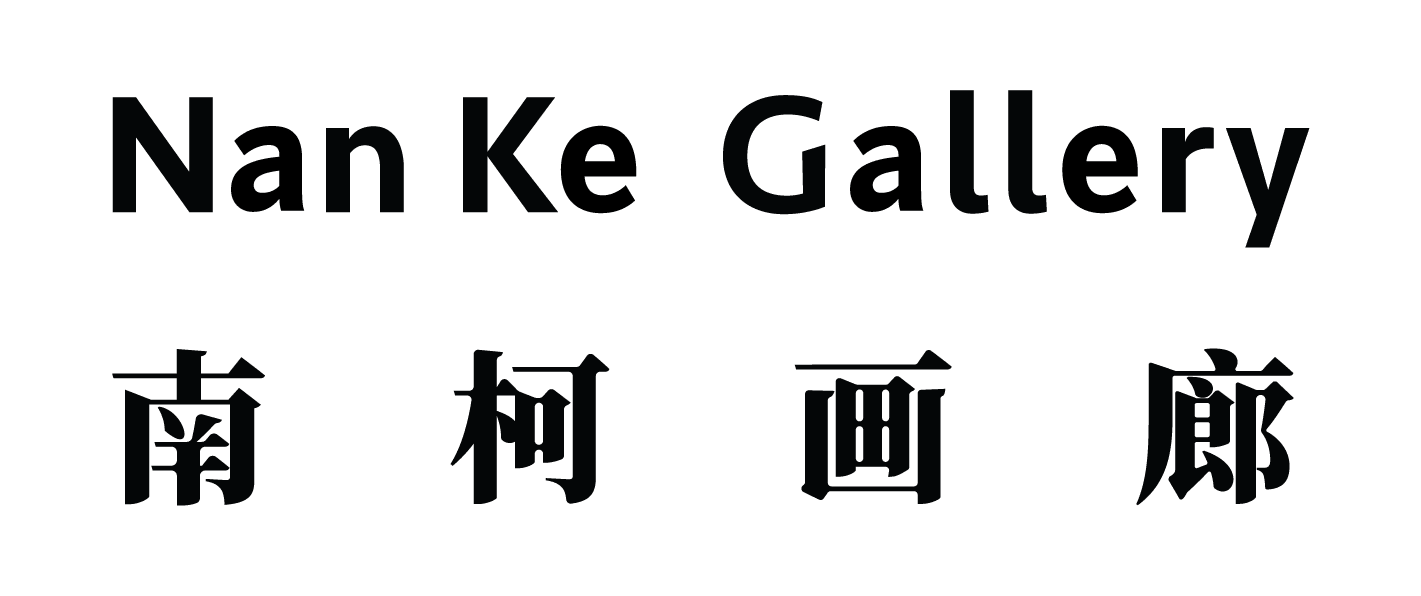Nan Ke Gallery is delighted to announce the official opening of artist Meng Zhou's solo exhibition, "Incomplete Wonder · Everlasting Land", on September 16, 2023. This exhibition will be presented in two distinct chapters and spaces. The first chapter, "Incomplete Wonder", will be on display at Nan Ke Gallery from September 16 to October 31, while the second chapter, "Everlasting Land" will be showcased at BACKSTAGE ART space (by appointment only) from September 16 to October 16.
The exhibition is curated by Austrian curator Alexandra Grimmer. She has previously held roles at Ernst Hilger Gallery in Paris (1998-2002) and Lingsheng Art Foundation Beijing (2010-12). She worked as a deputy director of Galerie Lelong Zurich (2006-2009). Since 2022 she is responsible for the program of Blue Mountain Contemporary Art, a collection of Chinese contemporary art with its base in Vienna.
The double-chapter exhibition covers Meng's latest series of sculptures, installations and paintings. The exhibition unfolds gradually like a journey, with light and shadow flowing through the years. The artist uses fragmented materials and myths to create hazy stories, where reality and fantasy seem to unfold in a dream world. Like a cultural archaeology, he collects and arranges stories from different ancient civilisations (e.g. Greece, Egypt, China) as well as from the oral tradition of the indigenous people, and presents them in a way that grows from each other, in order to find a common source of the human past. At the same time, in those missing pieces, the artist fills in fantasy bridges, exotic collections, and a lot of white space, and then gives the stories new connotations and meanings through modern deconstruction and reorganisation.
Meng has been travelling between the UK and China for the past 10 years, exploring the intersection of cross-cultural identities. His work is characterised by the elegance and flavour of the East, but also by the intellectualism and authenticity of the West. The scope of this exhibition encompasses occultism, mythology, palaeontology and dance, with the human being at the centre of the cultural map. In the labyrinth of his mind, or the journey, the destination seems to become blurred, and the process of exploration is more important. The works on display include fossils, meteorites, ores, herbs, creatures, etc., which are rightly or wrongly paired together in an extraordinary journey of the ordinary.
Incomplete Wonder / Mount Buzhou
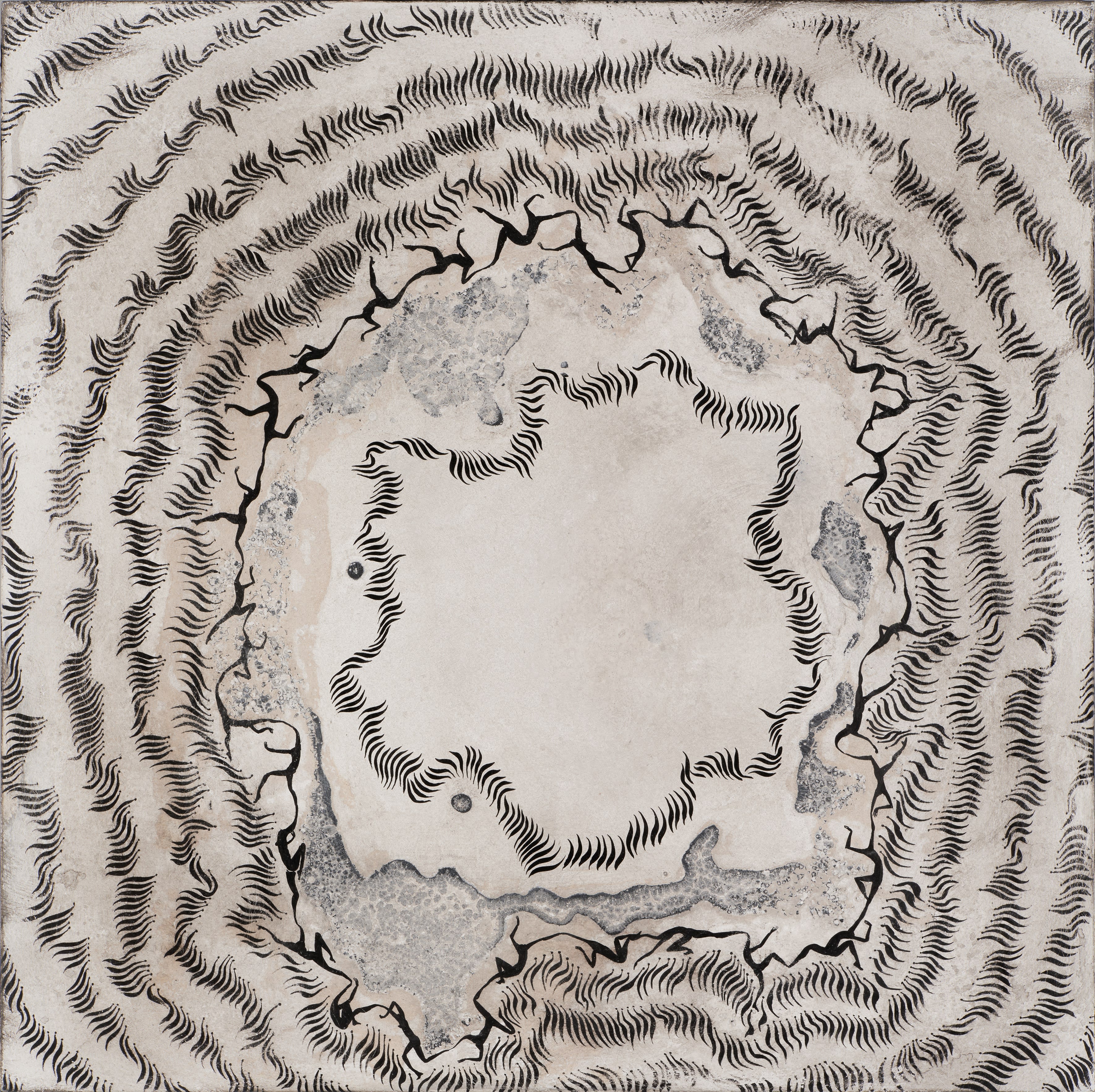
Meng Zhou
Seeweed 1, 2023
Clamshell powder, Dunhuang mud, buckskin glue, ink, wood panel
60h x 60w cm / 66.6h x 66.6w cm (framed)
© Courtesy of the artist
The prologue of this exhibition is opened by the ancient mythological mountain, Buzhou, whose name itself signifies "incompleteness." Legend has it that Mount Buzhou once served as the sole connection between the realms of humans and the divine. When it fell, the worlds of gods and humans became separated, leaving behind only the evidence of the divine in the vivid and ethereal stories passed down through time.
In the exhibition "Incomplete Wonder," Meng seems to attempt to transport us back to an era when gods and mortals walked together. A sculpture in the form of a Christmas tree is ironically named "Mount Top" invoking thoughts of the towering biblical Tower of Babel, which, too, was destroyed by the gods—a recurring theme in the myths that have been passed down through generations. The artist also endeavors to unlock ancient memories encoded in our genes through painting. These images appear as if they were cave paintings, offering glimpses into the lives and beliefs of humans thousands of years ago. Natural materials such as clamshell powder, buckskin glue, and Dunhuang mud are integrated into the texture of the paintings, connecting humans to history and resonating with the natural world.
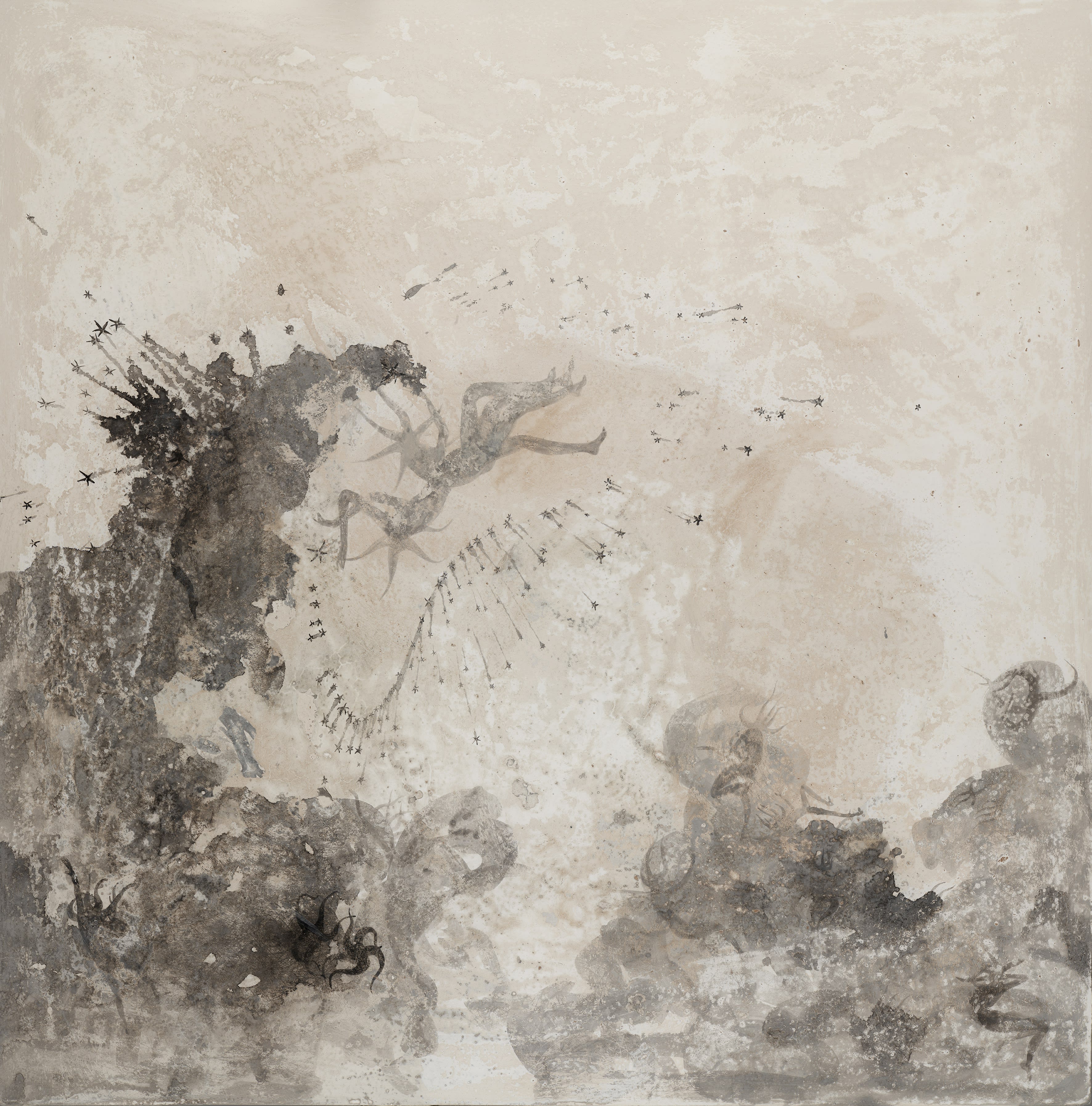
Meng Zhou
Star Wink 1, 2023
Clamshell powder, Dunhuang mud, buckskin glue, ink, wood panel
100h x 100w cm / 105h x 105w cm (framed)
© Courtesy of the artist
The question of "D'où venons-nous? Où allons-nous?" seems to have accompanied human civilization throughout history, and today it remains without a definitive answer. In the exhibition, the artist combines meteorites, fossils, and mythological stories in a serious yet humorous manner, shedding light on the first half of the question. But where will "Everlasting Land" lead us?
Everlasting Land / Mount Yuanqiu
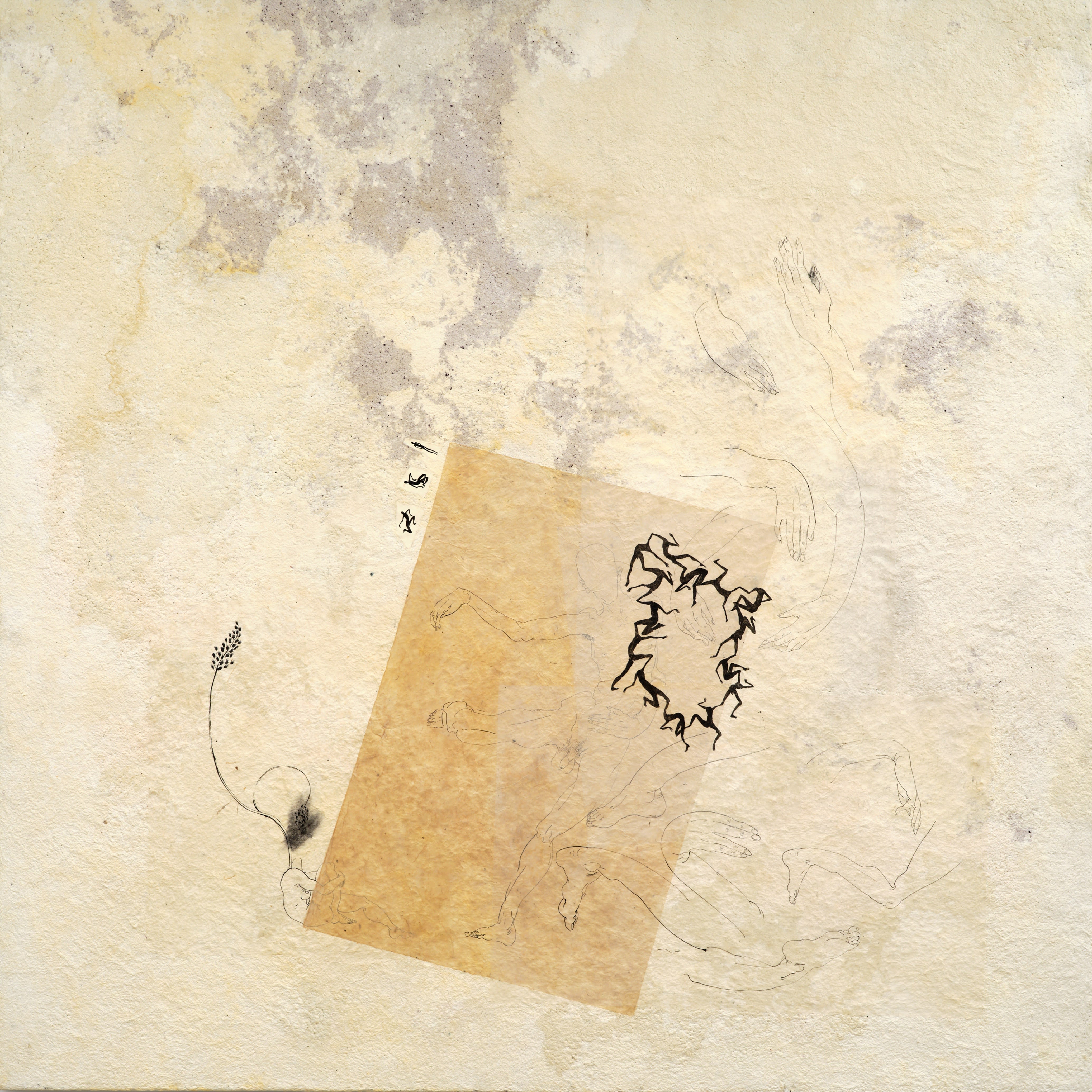
Meng Zhou
The Rite of Spring 1, 2020
PVA, paper, paper mache and ink on canvas
170h x 170w cm
© Courtesy of the artist
Legend has it that according to Huainanzi, among the 36 overseas countries, there is an undead country whose people have black skin and live long lives. A paradise beyond the world, or an eternal reincarnation? The exhibition at BACKSTAGE ART, Everlasting Land, takes Igor Strawinsky's Le Sacre du Printemps as its cue for a wild dance between man and nature.
The opening piece in the series, Adoration of the Earth, or "Dazhang", shows the exuberance of nature, travelling through time and medium. There is also an implied danger and self-protection mechanism. The artist uses the discarded remains of human civilisation to demonstrate the spiritual and wild forces of nature that can change the way things are. In the midst of this, extinction and creation, decay and growth are intertwined, the traces of mankind are gradually faded, and books and words are eventually returned to pulp, becoming nutrients and breeding grounds for fungi.
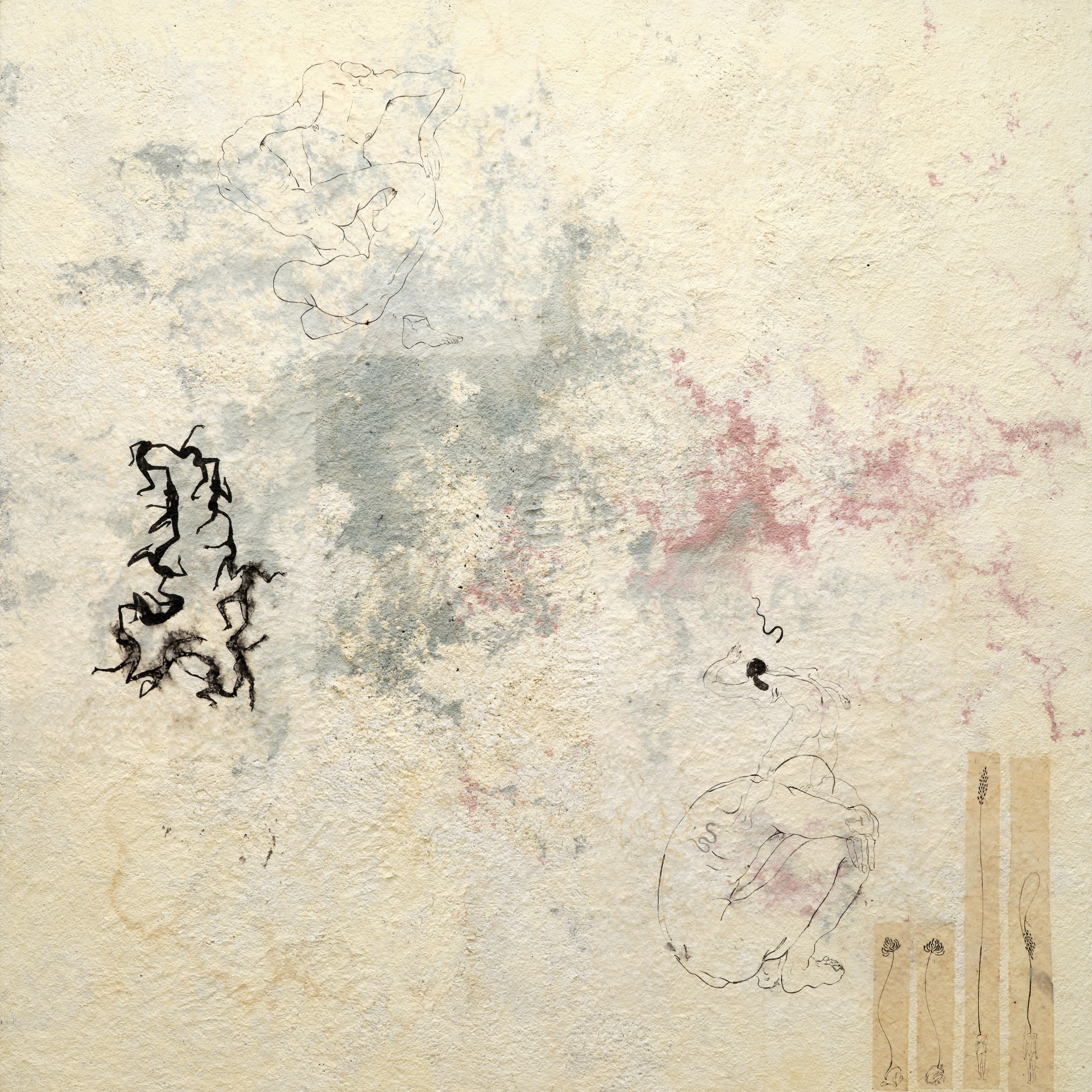
Meng Zhou
The Rite of Spring 2, 2020
PVA, paper, paper mache and ink on canvas
170h x 170w cm
© Courtesy of the artist
Returning to the scene of sacrifice in the second chapter, on the basis of Dazhang, the artist introduces artificial catalysts, visually guiding the development of the story. The internal and external games that come from those catalysts bring about a reversal of identity in the round, the sacrificer and the recipient, the performer and the watcher, in different perspectives and positions, the interests determine the direction of the majority of the sacrifices. Destroying the system and bringing about immortality, like condensation and blackness, the black hole devouring everything, then everlasting life, is it a blessing, or is it a punishment?
Meng's works combine anthropology, history, fictional literature and music, and outline hypothetical models of human life and development through unique images and materials. He uses his complete personal consciousness to gain insight into moments of humanity and history, moments that are assembled like jigsaw puzzles and in unusual ways to form his works, or that he captures and records in his works as independently existing individuals.
Text by Alexandra Grimmer
Translation by Yusi Xiong
